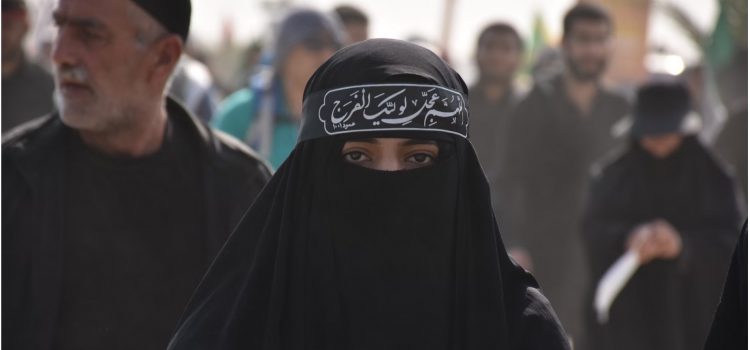
This is a free excerpt from one of Shortform’s Articles. We give you all the important information you need to know about current events and more.
Don't miss out on the whole story. Sign up for a free trial here .
Why are there protests in Iran? Could the recent protests lead to lasting reforms?
Violent protests are sweeping Iran as citizens condemn a woman’s death in police custody and, more broadly, the government’s oppressive theocratic rule. However, Iranians have protested the regime before and failed.
Read on to learn more about the protests in Iran and if they have the potential to cause government reform.
The Iranian Protests Denounce the Regime
On September 13, 2022, Iran’s morality police swept 22-year-old Mahsa Amini up off the street in Tehran, put her in the back of a van, and took her to a detention center to be “re-educated” because she was wearing her headscarf improperly. Three days later, Amini was dead. Widespread protests in Iran broke out, spreading across the country in response to Amini’s death and continuing ever since, with demonstrators chanting “Women, life, freedom,” and “Death to the dictator.”
Iranian leaders blame Amini’s death on a heart attack and underlying health conditions, though photos show the young woman lying in a hospital bed, her face battered. Amini’s family denies that she had health conditions and says that authorities struck her head with a baton, causing her to go into a coma.
Though the demonstrations arose in response to Amini’s death, they’ve evolved to also reflect a deeper dissatisfaction with the Iranian government’s theocratic rule, drawing uncharacteristically diverse crowds and resulting in some of the strongest and most violent protests in years. Experts say that Iranian protesters aren’t just seeking justice for Amini, they’re looking to overthrow the entire Islamic Republic.
Will the current uprisings succeed and lead to lasting reform in Iran? We’ll examine arguments for why it may happen and why it may not. We’ll also explore nuances that make answering the question definitively complicated. Finally, we’ll discuss how the protests may influence Iranian women’s rights and the country’s future.
Background: Iranian Dress Codes and the Morality Police
The head scarf, also called a hijab, has been a symbol of government oppression and citizens’ fight for freedom since the 1979 revolution, when protests broke out in response to conservative mandates requiring women to comply with modesty rules that centered on covering their hair and wearing loose robes. Between 1979 and 1990, Iranian women who failed to meet dress code standards in public were subjected to harassment and assault by random police groups and other citizens.
In 1990, following the Iran-Iraq war, the Iranian government formally established the Guidance Patrol, also known as the morality police, to enforce dress code rules for men and women—though the squad has historically cracked down harder on women.
Yes, the Protests May Change Iran
Experts and analysts say a number of factors distinguish the current protests in Iran from those in the past, suggesting that the uprisings will lead to longer-lasting change this time.
They Have Broad Political Support
Though women are leading the Iranian protests, an unprecedented gathering of Iranians of diverse backgrounds is rising up together against the government. From the working class to the wealthy, conservatives to liberals, and across age, gender, and ethnicity, Iranians are taking to the streets, and the government has repeatedly failed to suppress them.
- According to the Revolutionary Guard’s deputy commander, the average age of protesters being arrested is 15, representing a constituency that some believe will not follow Iran’s old-school regime.
- Many universities are on strike, and large numbers of students are participating in the protests.
- The mobilization of unionized bus drivers, oil workers, and teachers in the current protests could shift the balance of power and damage the regime.
Anger About Amini’s Death Is Fueled by Long Standing Unhappiness
Protesters’ diversity in Iran reflects broad frustration with a government entrenched in unfixable problems, from economic woes to blatant corruption, political repression, and social restrictions. Some argue that the combination of grievances creates new potential for an uprising powerful enough to compel lasting change in Iran.
Analysts assert that the Iranian government has blocked so many reforms that many protesters fear the system is unfixable and, feeling that they have nothing to lose, are willing to die for a better life.
At the same time, public opinion polls suggest that Iranian citizens’ support for the government is flagging:
- Just 18% of 17,000 respondents reported, in March, that their values and ideals are aligned with those of the Islamic Revolution.
- A 2020 study found that 72% of Iranians oppose mandatory veiling.
The Protests Are Spontaneous and Leaderless
Analysts say that the frequent, widespread, and unpredictable nature of the protests in Iran makes it difficult for government forces to keep up with and respond to them. For example, young women, university students, and schoolgirls are staging flash-mob protests to elude government response. It’s also difficult to squash a leaderless movement, as there’s no figurehead to take out.
Iranians Have Enjoyed Times of Greater Freedom—and Want More
After the Revolution, higher education skyrocketed:
- Female literacy soared from below 30% in 1976 to 80% four decades later.
- Percentages of women in any form of higher education increased from 3% in 1978 to 59% in 2018.
- Female representation in academic professions increased from 1.4% before the Islamic Revolution to 24% today.
There were also social gains under the leadership of reformist Hassan Rouhani, whose more forgiving morality police permitted young women to show more hair, unmarried women and men to mingle in public, and Western music to be played in cafes in some Iranian cities.
Iranian Leadership Is Fragile
The ayatollah Khamenei, who turned 83 this summer, is rumored to have prostate cancer. His death could result in power shifts and fuel protesters.
No, the Protests May Not Change Iran
Most experts and analysts assert that the Iranian government, betting on history, will continue to double down on its brutal suppression of protesters and wait for the demonstrations to die out as they have in the past. Many agree that while this strategy may not work forever, it could continue to work in the short term.
The government is working to crush the protests by tear gassing and arresting protesters and killing dozens. They’re also controlling the narrative and making it difficult for demonstrators to get and share information by arresting journalists, jamming phone networks, and censoring the internet.

Want to fast-track your learning? With Shortform, you’ll gain insights you won't find anywhere else .
Here's what you’ll get when you sign up for Shortform :
- Complicated ideas explained in simple and concise ways
- Smart analysis that connects what you’re reading to other key concepts
- Writing with zero fluff because we know how important your time is






